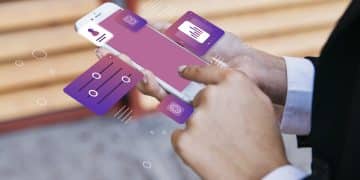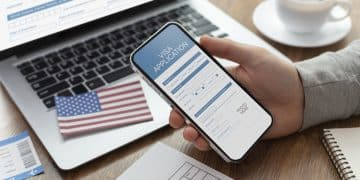How to open a bank account online: Step-by-step guide

Anúncios
Open a bank account online has never been more convenient, thanks to the wide availability of virtual banks and internet banking apps.
Whether you are managing your finances for the first time or switching to a new bank, learning how to open a bank account online can save you time and effort.
However, there are important details to understand, such as eligibility requirements, necessary documents, and whether an initial deposit is required.
Anúncios
This guide will walk you through everything you need to know about open a bank account online. From understanding who qualifies to step-by-step instructions, you’ll have all the tools to make an informed decision.
Can I open a bank account online?
Most people can successfully open a bank account online, but approval is not guaranteed.
Banks and credit unions have streamlined the process, allowing applications to be completed in just minutes. However, certain circumstances may lead to rejection.
Anúncios
Applications are typically denied if the applicant has a poor banking history, such as unpaid overdrafts or reports of fraud on their ChexSystems file.
Another reason could be failing to provide a valid government-issued ID. Age restrictions also apply—most institutions require you to be at least 18 years old to open an account independently.
Additionally, some banks cater exclusively to U.S. residents or citizens, though exceptions exist for international applicants.
By understanding and addressing these potential obstacles, you can increase your chances of successfully open an account online.
What do you need to open a bank account online?
open a bank account online is a straightforward process, but it requires some essential documents and details. To get started, you’ll need:
- Government-issued ID: This could be a driver’s license, state ID, or passport.
- Social Security Number (SSN) or Individual Taxpayer Identification Number (ITIN): For tax reporting and identity verification.
- Proof of address: Documents such as utility bills, lease agreements, or recent bank statements.
- Contact information: Your phone number and email address to set up the account and communicate with the bank.
Having these materials ready ensures a smooth and efficient application process.

How to open a bank account online
Open a bank account online is a simple process that can be completed in just a few steps.
With digital banking, you can select your account type, submit your application, and fund your account without ever visiting a branch.
Below, we’ll guide you through each step to ensure a seamless experience.
Choose the right type of account
The first step is to determine which type of account best suits your needs. Here are the most common options:
- Checking accounts: Ideal for everyday use, such as paying bills and making purchases.
- Savings accounts: Designed to help you save money and earn interest.
- Money market accounts: A mix of savings and checking features, often offering higher interest rates.
- Certificates of Deposit (CDs): Lock in your funds for a fixed period in exchange for guaranteed returns.
Research the benefits and limitations of each type to ensure your choice aligns with your financial goals.
Gather your documents
To avoid any disruptions during the process, have all necessary documents readily available. This includes your government-issued ID, SSN or ITIN, and proof of address.
Ensuring the accuracy of your information will help the bank verify your identity quickly.
Complete the online application
After selecting a bank and account type, visit their website to start the application.
You’ll need to provide personal information, such as your full name, date of birth, address, and contact details.
During this step, you’ll also agree to the bank’s terms and conditions, including their privacy policies and any fees associated with the account.
Make your initial deposit
Most banks require a deposit to activate your account. The amount varies, but generally ranges from $25 to $100. This deposit can be transferred from another bank account or made using a credit or debit card.
Some banks may allow you to skip this step temporarily if they offer no-deposit accounts, but funding will eventually be necessary to fully use the account.

Can I open a bank account online without a deposit?
Yes, some banks allow you to open an account without an initial deposit, although this option is less common.
These accounts, often advertised as “no minimum balance accounts,” are especially appealing to individuals who may not have funds readily available during the application.
However, it’s important to note that even no-deposit accounts will eventually need to be funded to remain active.
Many banks also require direct deposit enrollment or a specific balance threshold to waive monthly maintenance fees.
Always review the bank’s policies to understand any hidden costs or restrictions associated with these accounts. Open a bank account online is a convenient and efficient way to manage your finances.
By gathering the necessary documents, choosing the right type of account, and following the bank’s step-by-step application process, you can secure an account that meets your needs in no time.
From checking accounts for everyday spending to savings accounts for building your future, the options are vast and versatile.
Take time to compare banks, read the fine print, and ensure you’re selecting a solution that aligns with your financial goals.
For more tips and financial guidance, explore our site and stay informed about the best ways to manage your money!
Also, read our content explaining how an emergency fund works for students.





